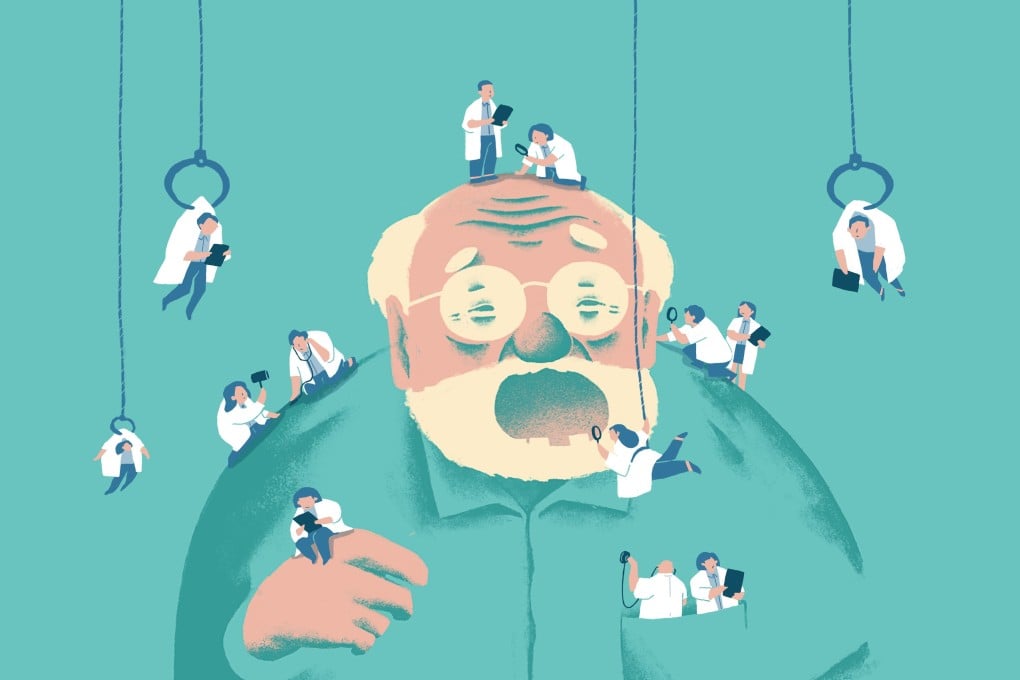China’s ageing society: tech platforms step in with array of health care services to assist greying population
- China population of 65 and over is expected to double to 370 million by 2050 from 191 million last year
- Size of China’s elderly-care industry is predicted to top 10 trillion yuan (US$1.57 trillion) by 2024, with an average annual growth rate of about 20 per cent

Wang Fengbao was diagnosed with Alzheimer’s five years ago. The 77-year-old, admitted to a nursing home in Shanghai’s Jinshan district, displays telltale signs of the disease – difficulty remembering things that just happened and completing familiar tasks among others. But since she started using Shanghai-based start-up Fourier Intelligence’s therapy, such as AI-controlled interactive games and puzzles to improve fine motor control and cognitive ability, her condition has improved markedly.
Some 60km away in Xuhui, a 91-year-old woman, surnamed Yan, needs a different type of care. At 7.30am each morning, caretaker Huang Lijuan arrives at Yan’s home, gives her a bath, feeds her breakfast and attends to other needs before finishing the hour-long service. Huang is employed by YD Care, a private home care provider owned by Hong Kong-based operator New Frontier.
Wang and Yan are among the 191 million people aged 65 and over in China, and many of them suffer from varying degrees of disability and health issues. The sheer size of the elderly population has created huge business opportunities for tech-led rehabilitation, medical treatment, nursing homes and home-based care services providers.

13:30
Chinese woman couldn't find suitable nursing home for elderly parents, so she opened one
“Today, China’s infrastructure for both health care and longevity costs too much and delivers too little, with the gap creating opportunities for health care providers and investors,” said Jiang Xiaodong, managing partner at Long Hill Capital, a Chinese venture capital firm he founded in 2016.